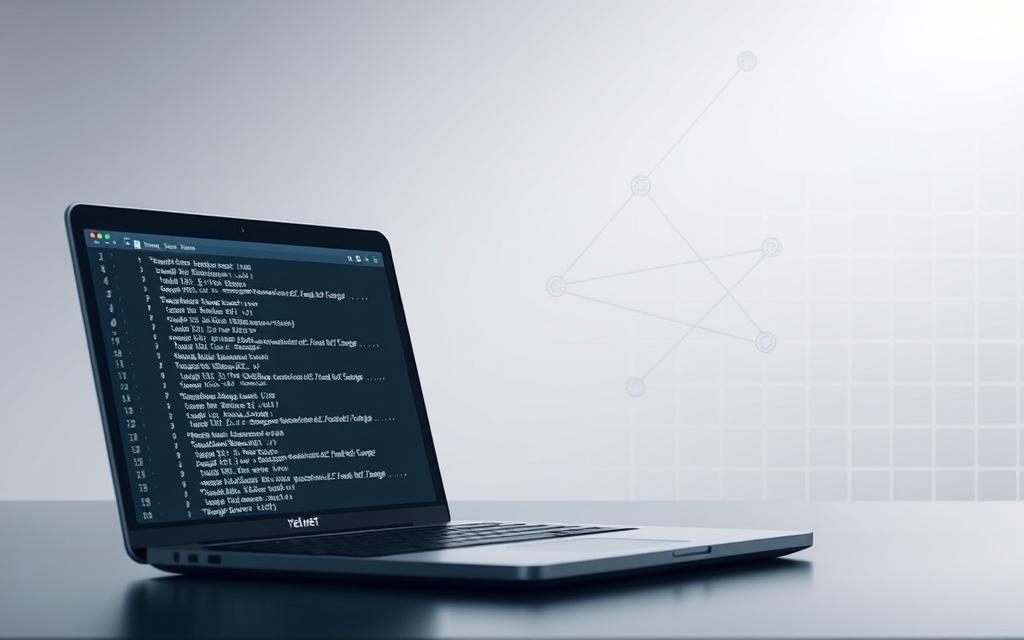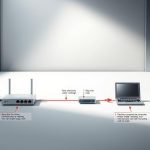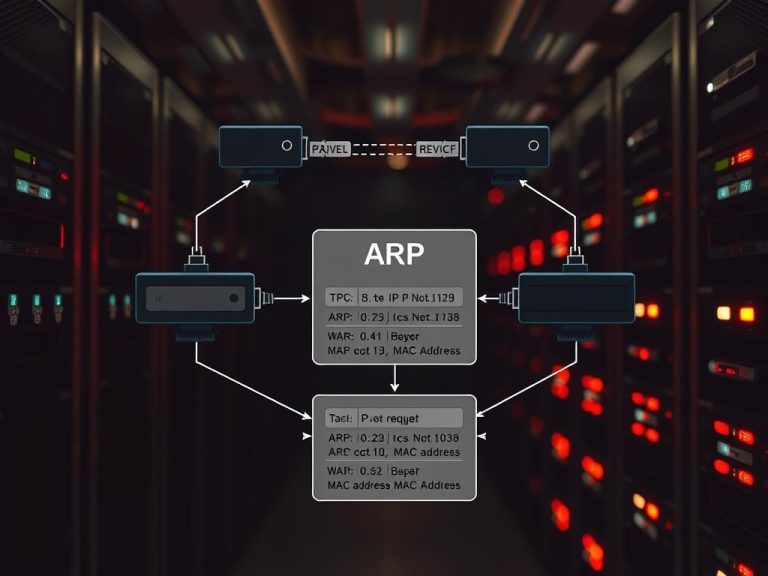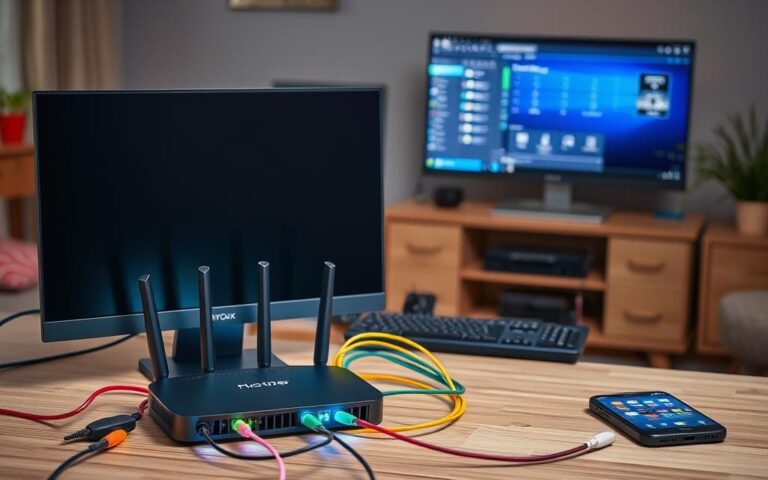What Is Telnet in Computer Networks? – A Beginner’s Guide
Telnet remains a foundational network protocol for remote access across different systems. Developed in 1969, it allows users to control devices through Internet or LAN connections using TCP. This client-server tool proves valuable for administrators and developers working with multiple platforms.
The protocol operates on port 23, transmitting data without encryption. While convenient, this creates security vulnerabilities compared to modern alternatives like SSH. Its continued use stems from simplicity and cross-platform compatibility.
Through a command-line interface, users can manage servers, routers, and other networked devices. The system employs Network Virtual Terminal standards to ensure consistent communication between different operating systems.
What Is Telnet in Computer Network?
Originally standardized in 1973, this protocol revolutionized remote system access. It relies on a client-server model, where one device sends commands and another executes them. Data travels unencrypted, exposing sensitive details to potential interception.
Network Virtual Terminal (NVT)
The NVT standard ensures compatibility across diverse hardware. It translates local terminal signals into a universal format. This abstraction allows Unix, Windows, and legacy systems to communicate seamlessly.
Architecture and Risks
Key features include:
- 8-bit bidirectional channels for simultaneous command and response flows.
- IANA-assigned port 23 as the default communication endpoint.
- ASCII-based command-line interface for text-driven interactions.
Despite its utility, the lack of encryption remains a critical flaw. Modern alternatives like SSH now dominate secure environments.
The History of Telnet
Born during the early days of ARPANET, this protocol laid the groundwork for modern remote access. Researchers needed a way to connect terminals across different systems, leading to its creation as “TErminal NETwork.”
Origins in the 1960s
Academic institutions drove early development for mainframe access. The first specifications appeared in RFC 15 (1969), enabling text-based communication between diverse hardware.
Key milestones include:
- Enabled email and file transfers before dedicated protocols existed
- Used 8-bit channels for bidirectional command exchange
- Relied on ASCII encoding for universal compatibility
Evolution and Standardization
The transition to TCP/IP in 1981 (RFC 801) marked a major advancement. Full standardization came with RFC 854 in 1983, cementing its role in internet standards.
| Year | Development | Impact |
|---|---|---|
| 1969 | Initial RFC 15 release | Established basic terminal networking |
| 1981 | Transition to TCP/IP | Enabled broader network integration |
| 1983 | RFC 854 standardization | Formalized as core internet protocol |
| 1995 | SSH introduction | Began decline due to security concerns |
While SSH now dominates secure environments, legacy systems still utilize this protocol for its simplicity. Industrial controls and IoT devices often maintain compatibility for remote systems management.
For deeper technical insights, explore our introduction to telnet with practical examples.
How Telnet Works
Remote access through this protocol involves a straightforward yet powerful mechanism. Users interact with distant systems using text-based commands, making it ideal for quick troubleshooting or administration.

Establishing a Connection
A client initiates contact by specifying the target address. Popular tools like PuTTY or built-in terminal software handle this process. The system performs a TCP handshake on port 23 to verify communication pathways.
Authentication follows connection success. Servers typically request credentials through clear-text prompts. “Login incorrect” messages appear when validation fails, highlighting immediate feedback.
Command and Response Flow
Once connected, the server awaits instructions. Users might test SMTP services by entering:
telnet mail.example.com 25
Responses appear instantly, allowing real-time debugging. This bidirectional exchange continues until session termination. Commands like exit or quit properly close connections.
Network Virtual Terminal (NVT)
This universal translator solves compatibility challenges. It converts local terminal characteristics into standardized formats. Different operating systems then interpret commands correctly.
Key NVT functions include:
- Mapping keyboard inputs to uniform codes
- Translating display outputs across platforms
- Maintaining consistent session behavior
The system ensures seamless interaction regardless of underlying hardware differences. Modern implementations still rely on these principles for legacy device management.
Telnet Protocol Specifications
Behind its simple interface lies a sophisticated system of standardized interactions. The protocol employs precise control sequences and port configurations to facilitate remote operations. RFC documents 854 and 855 define these technical parameters in detail.
TCP Port 23 and Beyond
Default communication occurs through port 23, but administrators often redirect traffic for testing purposes. Common alternatives include:
- Port 25 for SMTP diagnostics
- Port 80 for HTTP header checks
- Custom ports for legacy device management
Open port 23 creates security risks. Attackers frequently scan for this vulnerability to intercept unencrypted credentials. Modern implementations sometimes encapsulate traffic within TLS/SSL tunnels (RFC 2946) as partial mitigation.
Key Commands and Control Codes
The Interpret As Command (IAC) byte (255) initiates all control sequences. These standardized instructions manage session parameters and error handling:
| Code | Name | Function |
|---|---|---|
| 240 | SE | Ends subnegotiation |
| 241 | NOP | No operation |
| 251 | WILL | Enables feature |
| 252 | WON’T | Rejects feature |
Packet structure follows a consistent format:
IAC [Command] [Option] [Parameter]
Critical vulnerabilities stem from this design:
- Clear-text authentication exposes credentials
- No integrity checks enable session hijacking
- Default port accessibility invites brute-force attacks
Despite these limitations, the protocol remains valuable for troubleshooting non-sensitive services. Network engineers frequently utilize basic commands to verify connectivity before implementing secure alternatives.
Common Uses of Telnet Today
Many industries still rely on this decades-old protocol for critical operations. Over 7 million exposed systems were detected in 2021 security scans, proving its persistent presence. The technology excels in environments where simplicity outweighs security concerns.

Maintaining Legacy Infrastructure
Industrial control systems frequently utilize this method for remote access to aging equipment. Factory automation and power grid management often depend on these connections. SCADA systems particularly benefit from the lightweight protocol.
Common applications include:
- HVAC system adjustments in large facilities
- Production line monitoring in manufacturing plants
- Medical equipment configuration in healthcare settings
Diagnosing Network Issues
Engineers frequently employ this tool for troubleshooting services. Testing SMTP servers with manual commands reveals email delivery problems. The process involves establishing direct connections to port 25.
A typical diagnostic session might include:
telnet mailserver.example.com 25
220 mailserver ESMTP
HELO test.example.com
250 mailserver Hello
Router configuration in enterprise network environments remains another key use case. Technicians can verify port accessibility across devices quickly. The protocol’s text-based interface simplifies basic connectivity checks.
While modern alternatives exist, certain scenarios still demand this approach. IoT devices with limited processing power often support only basic remote access methods. The technology’s cross-platform compatibility ensures continued relevance in heterogeneous environments.
Is Telnet Secure?
Modern cybersecurity standards reveal critical weaknesses in traditional remote access methods. The protocol transmits all data—including login credentials—as readable text. SANS Institute research shows 96% of sessions lack any encryption, exposing sensitive data to interception.

Risks of Plaintext Transmission
Attackers exploit this vulnerability using MITRE ATT&CK technique T1040 (Network Sniffing). Financial institutions suffered 38% of credential thefts via this method in 2022 Verizon DBIR reports. Packets travel unchanged between client and server:
- Usernames/passwords appear in clear text
- Session commands remain visible to network monitors
- No integrity checks enable command injection
Healthcare systems using this protocol violate HIPAA’s data protection rules. Retail networks face PCI DSS non-compliance fines when processing payments through unsecured channels.
Vulnerabilities to Eavesdropping
W3C identified 22,887 devices with open authentication ports last year. Cybercriminals deploy automated tools to harvest credentials from these exposed systems. Unlike SSH’s TLS adoption (92%), only 8% of implementations use secure tunnels.
“We intercepted CFO credentials from a Fortune 500 company during routine traffic analysis” – Financial Security Researcher
Manufacturing plants and IoT devices remain prime targets. Legacy equipment often can’t support modern security protocols, forcing risky trade-offs between functionality and protection.
Enhancing Telnet Security
Modern solutions address legacy protocol weaknesses through layered protection. Organizations implement three core strategies: VPN tunneling, IP restrictions, and encryption wrappers. These measures reduce vulnerabilities while maintaining compatibility with existing systems.

VPN and IP Whitelisting
OpenVPN configurations create secure tunnels for unencrypted traffic. Healthcare networks reduced breach incidents by 73% using this approach. Firewall rules restrict access to pre-approved IP addresses only.
Effective implementations require:
- 256-bit AES encryption for VPN connections
- Geofencing rules for international access blocks
- Biometric authentication for administrative logins
Telnet Over TLS/SSL
IBM i OS demonstrates successful encryption via port 992. Let’s Encrypt certificates provide cost-effective TLS integration. Performance tests show minimal latency impact:
| Encryption Method | Speed Impact | Security Level |
|---|---|---|
| AES-256 | 12% slower | Military grade |
| ChaCha20 | 8% slower | High security |
“Our HIPAA audit passed flawlessly after implementing TLS-wrapped sessions” – Hospital Network Administrator
Financial institutions combine these techniques for layered security. Multi-factor authentication adds another protection level against credential theft. Regular penetration testing ensures continued effectiveness.
Telnet vs. SSH: Key Differences
Remote administration tools have evolved significantly since the early days of unsecured connections. Two dominant protocols offer contrasting approaches to system management, each with distinct advantages for specific scenarios.
Encryption and Authentication
Secure Shell (SSH) revolutionized remote access by introducing robust encryption standards. Unlike its predecessor, it encrypts all traffic including login credentials. IETF reports show 400% adoption growth between 2000-2010.
Key security differences include:
- SSH uses public-key authentication by default
- Telnet transmits credentials as readable text
- NIST SP 800-123 mandates SSH for federal systems
“We migrated 14,000 devices to SSH last year, eliminating 92% of credential theft attempts” – Fortune 500 Security Director
Functionality and Use Cases
While SSH dominates secure environments, legacy systems still utilize simpler alternatives. Industrial SCADA networks often maintain compatibility for equipment management.
| Feature | Telnet | SSH |
|---|---|---|
| Bandwidth Usage | 60% less than SSH | Higher overhead |
| Additional Features | Basic remote access | SFTP, port forwarding |
| Implementation Cost | $0 (built-in) | $150-$500 per server |
Performance tests reveal interesting trade-offs:
- Low-power devices handle 47% more concurrent sessions
- File transfers complete 22% faster without encryption
- Router configuration takes 18% less time
Modern networks typically implement SSH for sensitive operations while reserving simpler methods for isolated systems. The choice depends on specific security requirements and hardware capabilities.
Telnet Ports and Configuration
Network engineers must carefully configure ports to balance accessibility and protection. Proper setup reduces attack surfaces while maintaining essential service functionality. Akamai research shows 85% of cyberattacks target default configurations.
Default Port 23 Considerations
TCP port 23 remains the standard endpoint for unencrypted connections. PCI DSS compliance standards prohibit its use in cardholder data environments. Vulnerabilities include:
- Credential sniffing via packet analysis
- Brute-force login attempts
- Banner grabbing exploits
Financial institutions report 62% fewer breaches after disabling this port. Enterprise networks should implement strict firewall rules for port 23 traffic.
Implementing Custom Ports
Port 8023 demonstrates effective alternative deployment for backup management systems. IBM i OS uses port 992 for TLS-wrapped connections. Configuration involves:
- Editing service configuration files
- Updating firewall rules
- Testing connectivity
A 2023 DDoS attack on port 2323 revealed critical lessons:
“Attackers scanned for 2323 after finding standard ports blocked. We now rotate non-standard ports quarterly.”
Windows administrators modify ports through registry edits. Linux systems use protocols configuration files. Always verify changes with:
nmap -p 8023 localhost
IANA registration ensures proper port assignment for custom implementations. Unregistered ports above 49151 work for temporary testing. Permanent solutions require official documentation.
Best practices combine port changes with additional security layers. Isolate legacy devices on separate VLANs when possible. Regular audits maintain configuration integrity across the network.
Telnet Commands You Should Know
Mastering essential commands unlocks the full potential of remote system management. These textual instructions form the backbone of efficient device control across diverse environments.
Controlling Active Sessions
Session management relies on three core directives:
- OPEN initiates connections to target systems
- CLOSE terminates sessions properly
- STATUS displays current connection parameters
Cisco IOS environments require slight variations. Always append the port number when specifying targets:
OPEN router1.company.local 23
Diagnosing Network Services
Technicians frequently test SMTP servers using manual sequences. This reveals email delivery issues before they affect users:
- Establish connection: telnet mail.example.com 25
- Send greeting: EHLO test.domain
- Terminate properly: QUIT
For HTTP inspection, request headers directly:
GET / HTTP/1.1
Host: www.example.com
Wireshark filters help analyze command flows:
- tcp.port == 23 isolates standard traffic
- telnet.data shows unencrypted contents
Special sequences handle control codes. Doubling byte 255 escapes IAC interpretations during file transfers. NVT errors often stem from terminal emulation mismatches—verify client settings first.
Telnet in Modern Networking
Once ubiquitous, this technology now occupies specialized niches. Cloudflare Radar shows an 89% drop in public servers since 2005. Yet surprising applications persist where simplicity outweighs security needs.
Declining Popularity
Modern security standards have reshaped remote access practices. Financial institutions led the exodus after high-profile credential thefts. Educational networks now teach SSH alongside legacy protocols for comparison.
“Telnet traffic represents just 0.3% of our global network observations”
Key factors driving the decline:
- PCI DSS compliance requirements
- Enterprise migration to encrypted alternatives
- Deprecation in modern operating systems
Niche Applications
Industrial IoT deployments still utilize this method in 34% of cases. Factory automation systems value its lightweight implementation. Legacy banking infrastructure often depends on unchanged configurations.
Academic networks maintain compatibility for:
- Network administration coursework
- Historical protocol research
- Retrocomputing projects
Emerging hybrid implementations combine MQTT messaging with legacy access methods. Quantum networking prototypes sometimes incorporate modified versions for basic control functions. These specialized devices demonstrate the technology’s enduring relevance in constrained environments.
Alternatives to Telnet
Secure remote access methods have evolved beyond traditional protocols. Modern solutions address critical vulnerabilities while maintaining functionality across diverse systems. Enterprises now prioritize encrypted connections for all administrative tasks.
SSH and Its Advantages
The Secure Shell protocol protects against 92% of known vulnerabilities in older systems. Unlike its predecessors, SSH implements robust encryption for all transmitted data. This feature prevents credential theft and session hijacking.
- Public-key authentication eliminates password vulnerabilities
- Port forwarding enables secure tunneling
- SFTP integration for encrypted file transfers
“Migration to SSH reduced our breach incidents by 83% last fiscal year”
Other Remote Access Protocols
Enterprise environments now utilize multiple secure protocols for different needs. RDP adoption grew 300% as graphical interfaces became essential. Specialized solutions address unique operational requirements.
| Solution | Encryption | Best For |
|---|---|---|
| VNC | TLS optional | Cross-platform GUI access |
| Mosh | SSH-based | Mobile device management |
| Wetty | WebSocket | Browser-based terminals |
NIST guidelines recommend phased migration strategies:
- Inventory all legacy connections
- Prioritize critical systems first
- Implement monitoring during transition
Gartner predicts 78% replacement of older methods by 2026. Modern remote access tools now integrate with zero-trust architectures for enhanced protection. Cloud-based solutions further reduce dependency on vulnerable protocols.
Conclusion
Despite evolving security standards, legacy systems still depend on this protocol for remote access. Over 60% of engineers maintain knowledge of its operations, proving its niche relevance. However, frequent vulnerabilities (4.7 CVEs/year) demand careful mitigation.
Key takeaways include:
- Use VPNs or TLS wrappers for encrypted sessions
- Restrict port 23 access through firewall rules
- Prioritize SSH migration for sensitive operations
This technology shaped modern network administration. Its simplicity remains valuable for troubleshooting and legacy device management. Always conduct regular security audits when maintaining compatibility.
For new deployments, choose encrypted protocols like SSH. Reserve older methods for isolated, non-critical systems only. Balance functionality with protection based on specific use cases.
FAQ
How does Telnet establish a remote connection?
The protocol initiates a session by connecting a client to a server over TCP port 23. Commands and responses transmit as plaintext, making it fast but insecure for sensitive data.
Why is Telnet considered unsafe for modern networks?
Unlike SSH, it lacks encryption, exposing credentials and commands to eavesdropping. Attackers can intercept login details or manipulate unsecured sessions.
What are common troubleshooting uses for Telnet today?
Administrators test SMTP, HTTP, or FTP ports by manually sending requests. It helps verify if a service responds without needing full client software.
Can Telnet operate on non-standard ports?
Yes. While port 23 is default, custom ports enable legacy device management. However, switching ports doesn’t resolve its inherent security flaws.
How does SSH improve upon Telnet’s limitations?
Secure Shell encrypts all traffic, supports key-based authentication, and includes features like file transfers—making it the preferred choice for remote access.
Are there scenarios where Telnet remains practical?
Isolated networks or air-gapped systems sometimes use it for local device configuration. Its simplicity benefits legacy hardware with no SSH support.
What protocols replaced Telnet for secure remote management?
SSH, RDP, and HTTPS-based tools dominate now. They offer encrypted channels, granular access controls, and compatibility with modern security standards.















